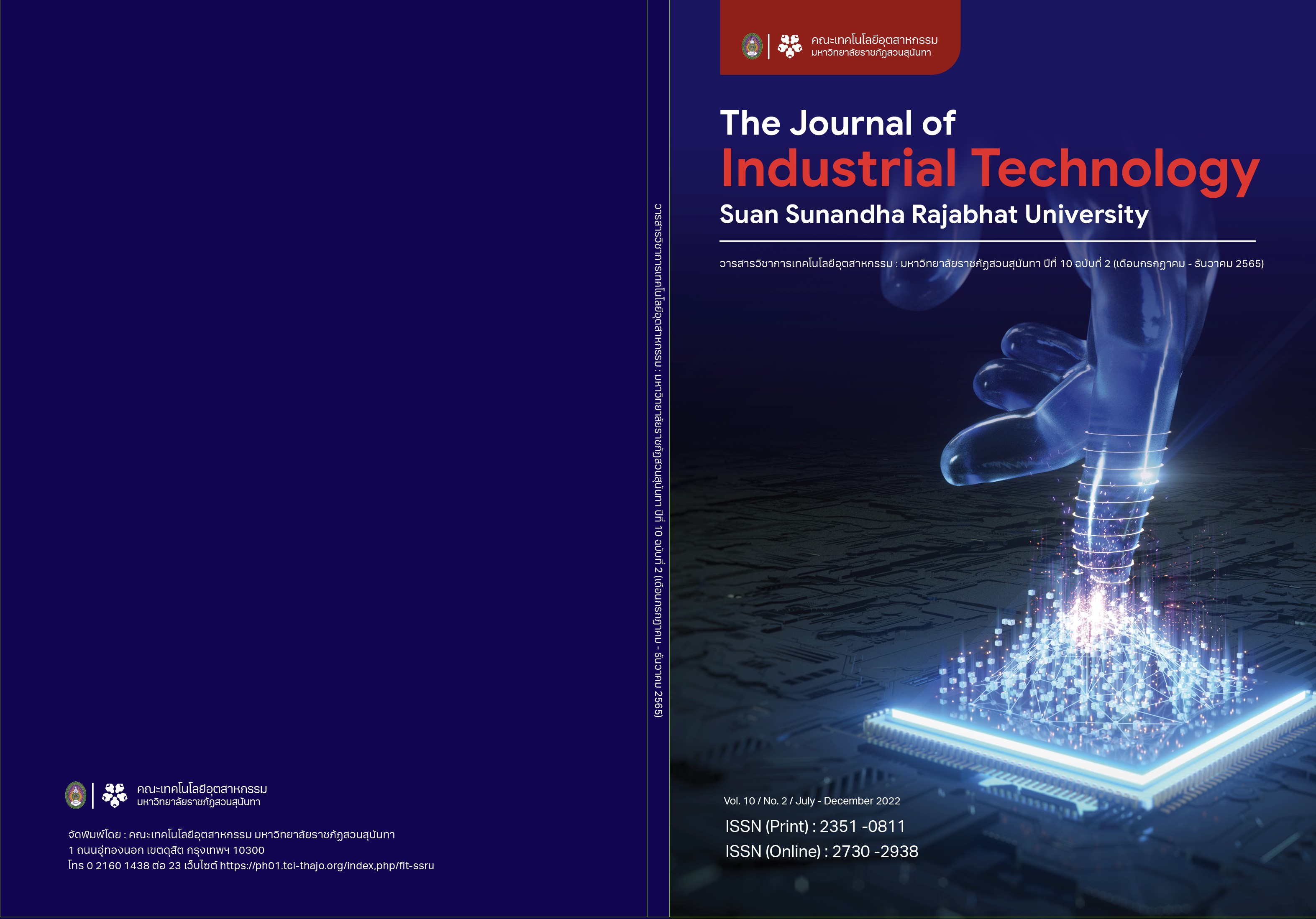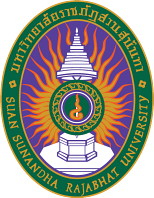The Design and Control for the Balancing Robot with fundamental controller using program MATLAB Simulink
Keywords:
Balancing robot, Inverted pendulum, PD Controller, Simulink, ArduinoAbstract
This paper aspires to demonstrate the design principles of balancing robots and PD controllers in that design. It applied the dynamics principles of balancing robot movements and used Newton's laws in its design. The mathematical model of the equilibrium robot will not be linear. Therefore, The Balancing Robot must first convert the non-linear equilibrium robot's mathematical model to a linear one. A mathematical model of a linear equilibrium robot had applied to the controller design. In designing a primary controller for a balancing robot, this article has selected a PD controller. It is not very complex and easy to modify or adjust to suit the balancing robot system to stabilize and eliminate possible interference in the system. In this article, I have chosen to use the Simulink because it can connect to the Arduino board and the balancing robot, thus resulting in ease of use, simulation and experiments. The controller logic used the ability of the controller to stabilize the balancing robot by simulating the system of the balancing robot used in the design of the controller obtained from the actual structure and comparing the performance of the inverted pendulum angle of the balancing robot with the controller obtained from the mathematical model of the robot. The equilibrium and performance index of the balancing robot control system uses a PD controller to maintain the stability of the equilibrium robot. The test of this controller emanated from computational linear equations derived from a mathematical model of a balancing robot, which can control and stabilize the equilibrium robot so that The Balancing Robot can maintain equilibrium.
References
F. Grasser, A. D’Arrigo, S. Colombi, A. Ruffer, “JOE: A Mobile Inverted Pendulum”, IEEE Trans. Electronics, vol. 49, pp. 107-114, Feb 2002.
S. W. Nawawi, M. N. Ahmad, J.H. S. Osman, “Development of Two-Wheeled Inverted Pendulum Mobile Robot”, SCOReD07, Malaysia, Dec 2007, pp 153-158.
T. Nomura, Y. Kitsuka, H. Suemistu, T. Matsuo, “Adaptive Backstepping Control for a Two-Wheeled Autonomous Robot”, ICROS-SICE International Joint Conference 2009, Aug. 2009, pp 4687 – 4692.
R. M. Brisilla, V. Sankaranarayan “Nonlinear control of mobile inverted pendulum”, Robotics and Autonomous Systems Elsevier, Volume 70, pp 145-155, August 2015.
W. An and Y. Li, “Simulation and Control of a Two-wheeled Self balancing Robot,” in Proc. of the IEEE, International Conference on Robotics and Biomimetics – ROBIO 2013, Shenzhen, China, Dec. 2013, pp. 456-461.
Y. Yoshihiko, S. Ogawa, and S. Machida, “Experiments on step climbing and simulations on inverse pendulum control using robotic wheelchair with inverse pendulum control,” Transactions of the Institute of Measurement and Control, Vol.30, No.1, pp. 47-61, Feb. 2008.
O. Jamil, M. Jamil, Y. Ayaz, and K. Ahmad, “Modeling, control of a two wheeled self-balancing robot,” in Proc. of International Conference on Robotics and Emerging Allied Technologies in Engineering – iCREATE 2014, Islamabad, Pakistan, 22-24 April, 2014, pp. 1-6.
M. Ahmad and H. Osman, “Real-Time Control System for a Two-Wheeled Inverted Pendulum Mobile Robot,” Advanced Knowledge Application in Practice University Technology, Malaysia, Nov, 2015, pp. 299-312.
G. Sziebig, B. Takarics, and P. Korondi, “Control of an embedded system via Internet,” IEEE Trans. Ind. Electron., vol. 57, no. 10, pp.3324–3333, Oct 2010.
U. Ch, K. Babu, and K. Amaresh, “Sliding Mode Speed Control of a DC Motor,” 2011 International Conference on Communication Systems and Network Technologies, pp. 387–391, June 2011.
H. Maghfiroh, O. Wahyunggoro, A. I. Cahyadi, and S. Praptodiyono, “PD-Hybrid Tuning to Improve Control Performance in Speed Control of DC Motor Base on PLC,” in 3rd ICA, 2013, pp. 233–238, August 2014.
K. D. Young, “Controller design for a manipulator using theory of variable structure systems,” IEEE Trans. Syst. Man. Cybernetics, vol. 8, no. 2, pp. 101–9, Feb. 1978.
M. A. Imtiaz, M. Naveed, N. Bibi, S. Aziz, S. Zohaib, and H. Naqvi, “Control System Design, Analysis & Implementation of Two Wheeled Self Balancing Robot,” in Proc. IEEE 9th Annual Information Technology, Electronics and Mobile Communication Conference IEMCON 2018, Vancouver, Canada, pp. 1-6, 1-3 Nov, 2018.
A. Zimit, H. Yap, M. Hamza, I. Siradjuddin, B. Hendrik, and T. Herawan, “Modelling and Experimental Analysis Two-Wheeled Self Balance Robot Using PD Controller,” in Proc. of 18th International Conference on Computational Science and Its Applications - ICCSA 2018, Melbourne, Australia, Vol. 1, Jul. 2018, pp. 683-698.
J. Fang, “The LQR Controller Design of Two-Wheeled Self-Balancing Robot Based on the Particle Swarm Optimization Algorithm”, Conference Proceedings, Vol. 1,, 25 Feb., 2014, pp. 1-6.
S. I. Han, J. M. Lee, (2015). “Balancing and Velocity Control of a Unicycle Robot Based on the Dynamic Model”, IEEE Transactions on Industrial Electronics, Vol. 62, Issue 1, pp.405 –413, January 2015.
Jin, H., Hwang, J., Lee, J., (2011). “A Balancing Control Strategy for a One-Wheel Pendulum Robot Based on Dynamic Model Decomposition: Simulations and Experiments”, IEEE/ASME Transactions on Mechatronics, Vol.16, Issue 4, pp. 763 – 768, August 2011.
D. Buccieri, D. Perritaz, , P. Mullhaupt, Z.-P. Jiang, D. Bonvin,,(2009). “Velocity-Scheduling Control for a Unicycle Mobile Robot: Theory and Experiments”, IEEE Transactions on Robotics, Vol. 25, Issue 2, pp. 451 – 458, 2009.
Nguyen Gia Minh Thao, Duong Hoai Nghia, Nguyen Huu Phuc, “A PD Backstepping Controller For Two-Wheeled Self-Balancing Robot”, in Proc. Of The 2010 IEEE International Forum on Strategic Technology (IFOST 2010), Ulsan, South Korea, Vol. 1, Oct., 2010, pp. 76-81.
Varghese, E. Vincent, A. & Bagyaveereswaran, V., Optimal control of inverted pendulum system using PID controller, LQR and MPC. IOP Conference Series: Materials Science and Engineering, vol. 263, pp. 1-16, 2017.
Downloads
Published
How to Cite
Issue
Section
License
Copyright (c) 2022 Faculty of Industrial Technology, Suan Sunandha Rajabhat University

This work is licensed under a Creative Commons Attribution-NonCommercial-NoDerivatives 4.0 International License.
บทความที่ได้รับการตีพิมพ์เป็นลิขสิทธิ์ของคณะเทคโนโลยีอุตสาหกรรม มหาวิทยาลัยราชภัฎสวนสุนันทา
ข้อความที่ปรากฏในบทความแต่ละเรื่องในวารสารวิชาการเล่มนี้เป็นความคิดเห็นส่วนตัวของผู้เขียนแต่ละท่านไม่เกี่ยวข้องกับมหาวิทยาลัยราชภัฎสวนสุนันทา และคณาจารย์ท่านอื่นๆในมหาวิทยาลัยฯ แต่อย่างใด ความรับผิดชอบองค์ประกอบทั้งหมดของบทความแต่ละเรื่องเป็นของผู้เขียนแต่ละท่าน หากมีความผิดพลาดใดๆ ผู้เขียนแต่ละท่านจะรับผิดชอบบทความของตนเองแต่ผู้เดียว







